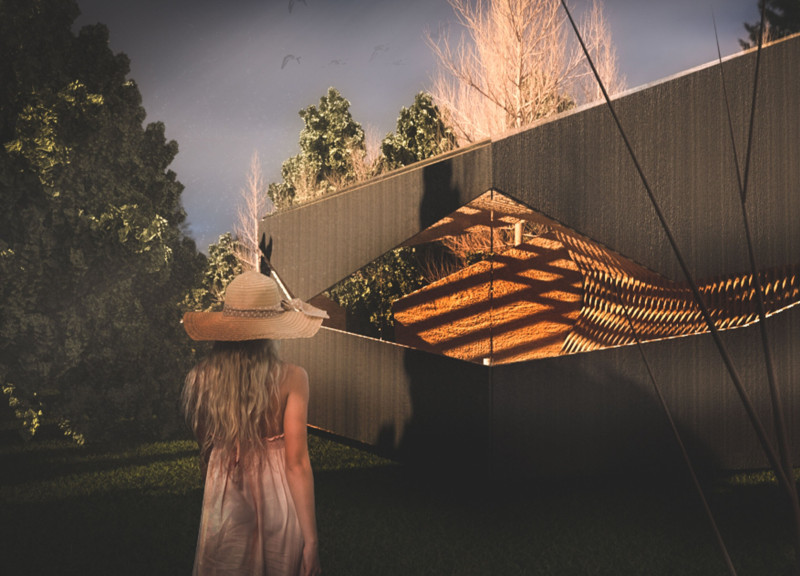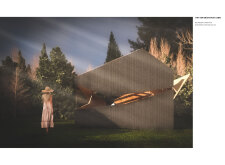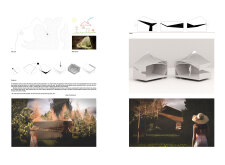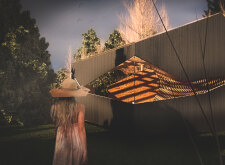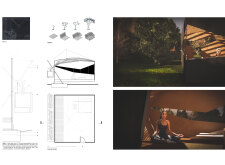5 key facts about this project
The design features a combination of textured metal cladding and exposed wooden beams, creating a visual contrast that enhances both aesthetics and durability. Glass elements allow natural light to penetrate, creating a dynamic ambiance within the cabin, while facilitating visual connection with the outside world. The architectural layout prioritizes open spaces, facilitating fluid movement throughout, which is key to its purpose as a meditative retreat.
Unique Design Approaches
The Tiny Kiwi Meditation Cabin stands apart from typical retreats due to its focus on geometric simplicity and thoughtful materiality. The sharp angles and clean lines of the exterior create an inviting presence that is both modern and respectful of its natural environment. The cabin’s façade, made of corrugated metal, not only provides durability but also reflects the textures of the surrounding landscape. This design choice minimizes maintenance and ensures longevity.
The interior layout is designed to promote serenity. Key spaces include a meditation area and an observation space, each oriented to take advantage of natural light and views of the landscape. The use of wood in the interior provides warmth and comfort, enhancing the meditative experience. Additionally, the arrangement of openings throughout the structure allows for varied interactions with the environment, creating an immersive experience that is often missing in conventional meditation spaces.
Architectural Elements and Functionality
The cabin employs a concrete foundation, which supports the entire structure while providing necessary insulation. The careful placement of windows allows for cross-ventilation and encourages occupants to engage with the changing light and weather conditions. The design is intentionally minimalist, reducing distractions and focusing attention on the primary purpose: mindfulness and tranquility.
In terms of architectural sections and plans, the spatial organization reflects a well-considered approach to functionality. Each area is designed to be versatile, yet distinct, allowing users to choose how they engage with the space. The blend of materials, from metal exteriors to wooden interiors, adds depth to the overall experience within the cabin.
Whether exploring architectural plans, sections, or unique design elements, the Tiny Kiwi Meditation Cabin offers valuable insights into creating spaces that prioritize both functionality and a connection to nature. For a more comprehensive understanding of the architectural ideas and details behind this project, further exploration of its presentation is encouraged.


